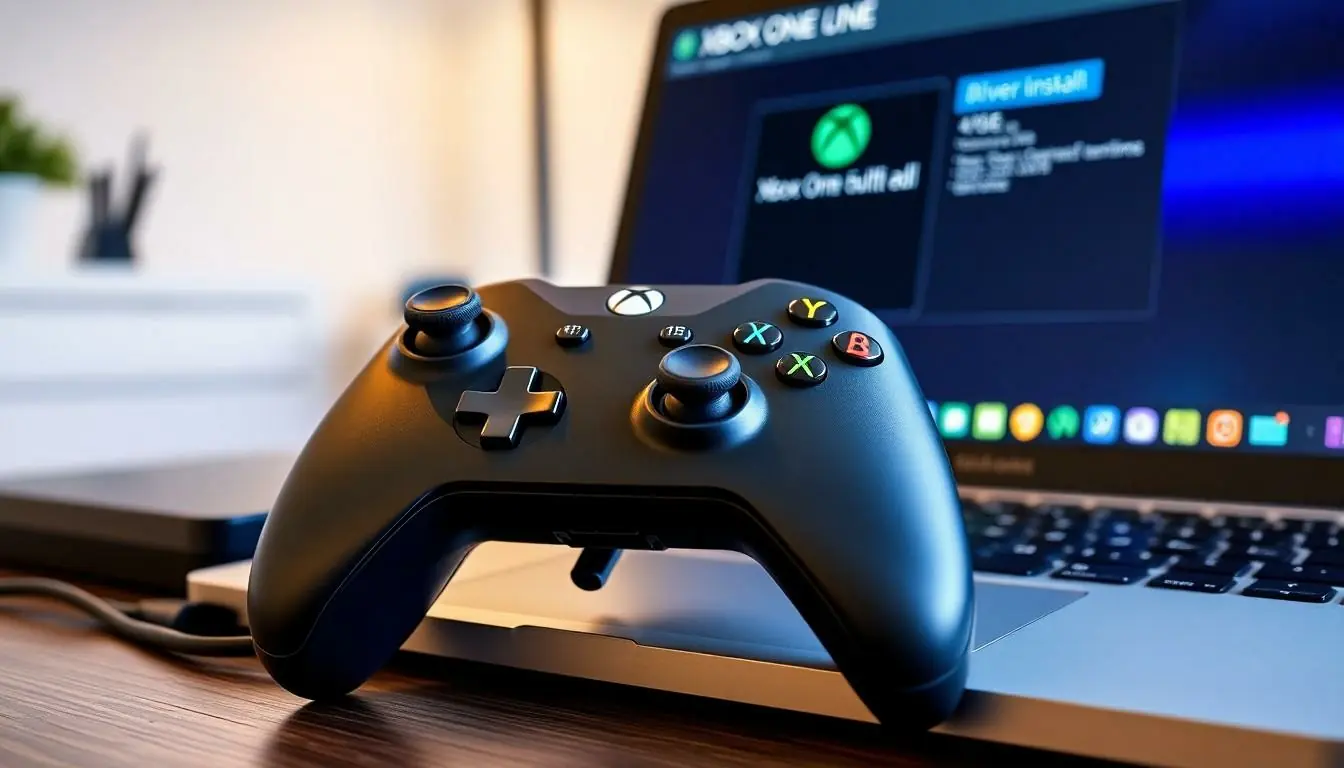Gamers know that nothing ruins a perfect gaming session like a stubborn Xbox One driver refusing to cooperate. It’s like trying to play a first-person shooter with a potato instead of a controller—frustrating and downright ridiculous. But fear not, because mastering your Xbox One driver can transform your gaming experience from a chaotic mess to a smooth, adrenaline-pumping adventure.
Table of Contents
ToggleOverview of Xbox One Driver
Xbox One drivers play a critical role in optimizing gaming performance. These drivers ensure compatibility and functionality, transforming the overall gaming experience.
Importance of Drivers in Gaming
Drivers connect hardware and software. Proper drivers eliminate lag and improve responsiveness. Gamers encounter smooth gameplay with the right drivers installed. They ensure full utilization of the console’s features. Loss of functionality happens without updated drivers. Consistent updates enhance security and performance. Drivers directly affect frame rates, graphics quality, and input latency, making them essential for serious gamers.
Key Features of Xbox One Driver
Multiple features define the Xbox One driver. A robust wireless connectivity option facilitates seamless interactions. The driver also supports various gaming peripherals, expanding usability. Automatic updates make maintaining optimal performance straightforward. Customization options allow gamers to adjust settings according to personal preferences. Compatibility with diverse games ensures a flexible gaming experience. Real-time performance monitoring provides insights into system efficiency, allowing gamers to make informed adjustments.
Compatibility and Installation
Ensuring compatibility and a smooth installation process is crucial for optimal Xbox One performance.
Supported Operating Systems
Windows 10 and Windows 11 support Xbox One drivers natively. Gamers can seamlessly connect their consoles without additional software. MacOS lacks native support, but users can employ third-party solutions to enable driver functionality. Linux also requires extra steps and may not guarantee full compatibility. Additional updates may enhance support across these systems, improving overall user experience.
Installation Process
Begin the installation by connecting the Xbox One controller via USB cable to the PC. Windows typically recognizes the device automatically, installing necessary drivers. Updating existing drivers can vastly improve performance. Occasionally, users may need to visit the Xbox support website for manual downloads. Follow prompts for installation, ensuring the console is powered on. Once installed, test connectivity through the Xbox Accessories app for verification.
Performance Analysis
Xbox One drivers significantly enhance overall gaming performance. Assessing how these drivers impact gameplay showcases their importance.
Gaming Experience
Drivers optimize the gaming experience by minimizing lag and enhancing responsiveness. Improved communication between the controller and the console fosters smooth interactions. Gamers benefit from updated drivers, allowing them to fully utilize console features. Customization options enable tailored gameplay, catering to individual preferences. Real-time performance monitoring aids users in understanding system conditions, enhancing strategic gaming.
Connectivity and Responsiveness
Robust wireless connectivity supports various gaming peripherals, ensuring seamless interaction. The native support in Windows 10 and Windows 11 simplifies the connection process, creating an instant setup experience. Automatic updates maintain compatibility, keeping performance top-notch. Users frequently notice an increase in responsiveness alongside better connection stability. A direct USB connection further reinforces engagement, allowing for comprehensive game control without interruptions.
Troubleshooting Common Issues
Common issues with Xbox One drivers can disrupt gameplay. Understanding these problems helps ensure a smoother gaming experience.
Connection Problems
Connection issues frequently arise with Xbox One drivers. The first step involves checking the USB cable; a faulty or damaged cable often causes disconnections. Inspecting the USB port on the console and the controller can reveal physical obstructions. Additionally, ensuring that the device is properly registered in the Xbox Accessories app assists in identifying connection stability. If problems persist, resetting the controller can resolve minor glitches. Alternatively, updating the driver through the Device Manager offers a solution to connection troubles. Restarting the console might also re-establish the connection effectively. Addressing these factors usually resolves connection issues efficiently.
Configuration Errors
Configuration errors can hinder the optimal functioning of Xbox One drivers. Firstly, verifying the settings in the Xbox Accessories app often leads to solutions. Misconfiguration, such as incorrect button mapping, can be easily adjusted through the app. Restarting the application may resolve temporary problems. In cases of persistent errors, uninstalling and reinstalling the driver through Device Manager provides a fresh start. Users should ensure that system updates are current since outdated software can create conflicts. Following these steps typically resolves configuration errors, allowing for a more enjoyable gaming session.
Alternatives to Xbox One Driver
Gamers often explore alternatives to enhance their gaming experience beyond the Xbox One driver.
Other Gaming Controllers
Many gaming controllers provide viable options. The PlayStation DualShock 4 supports Windows and MacOS with third-party drivers, allowing smooth gameplay. Additionally, the Nintendo Switch Pro controller offers compatibility via Bluetooth, making it an excellent choice for diverse gaming setups. PC gamers often turn to brands like Razer and Logitech, which create customizable controllers tailored for specific genres. Each alternative brings unique features, such as enhanced ergonomics or programmable buttons, which can match individual gaming preferences.
Comparison with Xbox Series X Driver
When comparing the Xbox One driver to the Xbox Series X driver, differences become clear. The Xbox Series X driver features improved latency reductions, ensuring even faster response times. Enhanced wireless technology supports better connectivity and stability across multiple devices. More customization options are available with the Xbox Series X driver, allowing users to fine-tune settings. Gamers notice the Series X driver supports higher resolutions and frame rates, optimizing overall performance. Performance monitoring tools also offer advanced capabilities, providing deeper insights into gameplay dynamics.
Conclusion
Mastering Xbox One drivers is essential for any gamer looking to enhance their experience. Updated drivers not only improve performance and responsiveness but also ensure compatibility with various peripherals and games. By following the right installation and troubleshooting steps, gamers can avoid common pitfalls and enjoy seamless gameplay.
As technology evolves, staying informed about driver updates and alternatives can provide a significant edge. Whether opting for the Xbox One driver or exploring other gaming controllers, understanding these tools is key to maximizing enjoyment and performance. Embracing the full potential of Xbox One drivers transforms gaming from a frustrating challenge into an exhilarating adventure.



